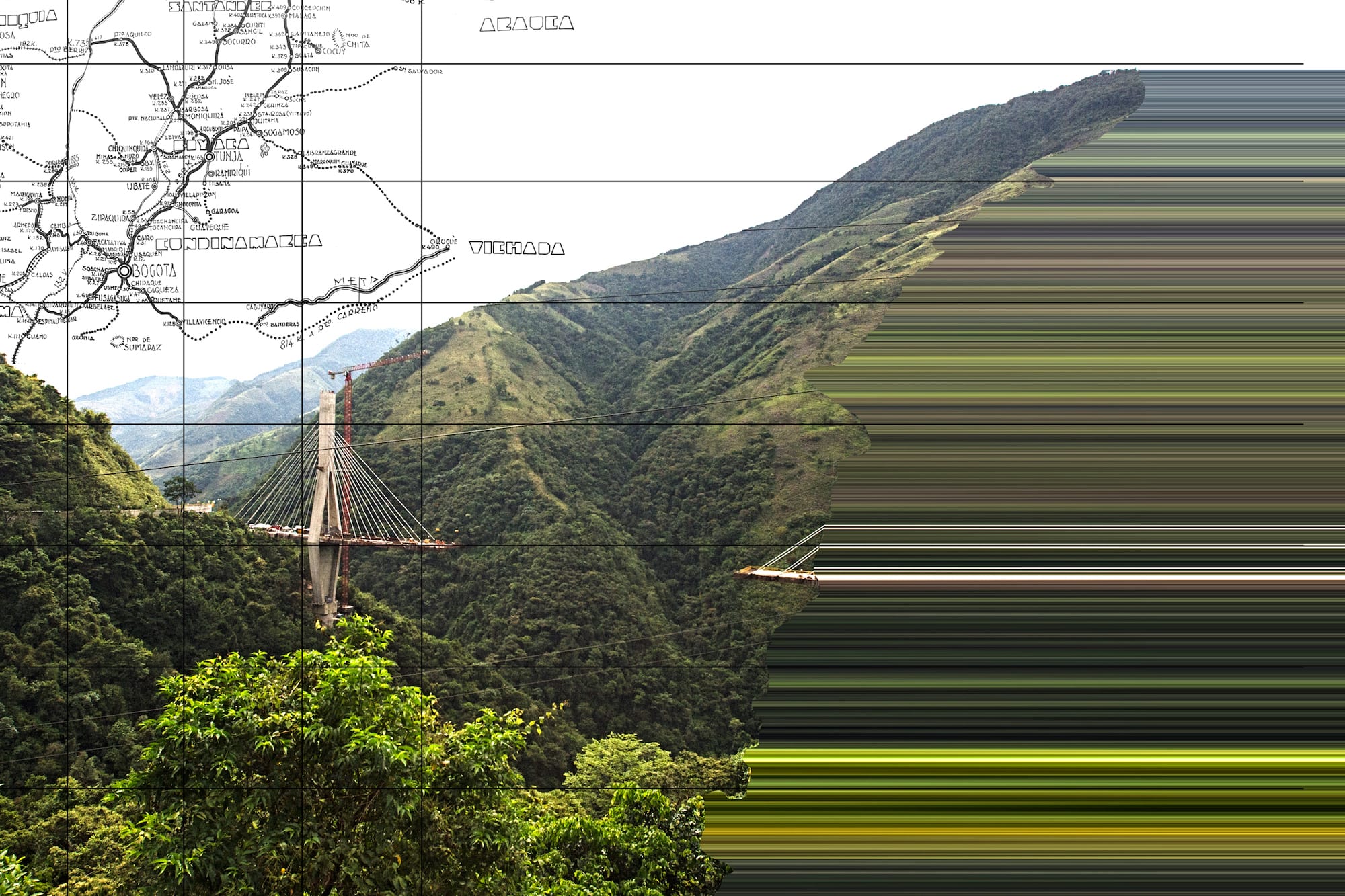
On January 15th, 2018, the Chirajara Bridge on Carretera Bogotá -Villavicencio collapsed during construction, killing nine workers. This tragedy should be read as a glitch: the collapse of the bridge reveals that the infrastructure of modernity is often deeply tied to the determination of who lives and who dies in the contemporary nation-state. In The Commons: Infrastructure for Troubling Times Lauren Berlant writes “A glitch is an interruption within a transition, a troubled transmission. A glitch is also the revelation of an infrastructural failure. The repair or replacement of broken infrastructure is … necessary for any form of sociality to extend itself.”
Positioning the collapse of the Chirajara Bridge within a contextual understanding of infrastructure as differentially experienced by those in positions of alterity within the nation-state, the role of the designer then becomes not simply to rebuild that which has broken, but instead to answer Berlant’s call to determine “how that extension can be non reproductive, generating a form from within brokenness beyond the exigencies of the current crisis, and alternatively to it too.”
Zannah Mae Matson
Zannah Mae Matson is a PhD Student in Human Geography at the University of Toronto where her research focuses on the construction of territory through highway infrastructure development and counterinsurgency doctrine in Colombia. She teaches urban planning and design at Ryerson University. Matson holds a Masters of Landscape Architecture from the Harvard Graduate School of Design. @zannahmae